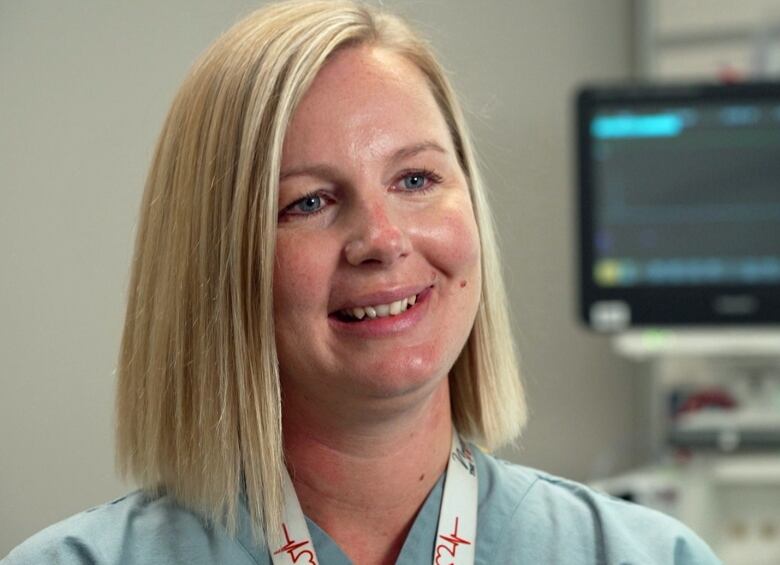When a surgeon saw patients stuck waiting for orthopedic surgery, he designed a better operating room – one publicly funded and able to perform procedures faster and more efficiently.
Now it’s a model that other hospitals want to copy.
Dr Abdel-Rahman Lawendy, head and medical director of London Health Sciences Centre’s Ambulatory Surgery Centre, has redesigned the operating room – one of the most resource-intensive places in a hospital – for certain orthopedic surgeries.
His idea of a “surgical centre” takes some patients away from large standard operating rooms full of staff and equipment, reducing that to what is needed to operate on ambulatory patients – people who can walk after surgery and go home. the same day . Examples of surgeries performed include repairing a torn ACL in the knee, a common sports injury. And the surgeries are performed in operating rooms outside the hospital, although they are run by the facility.
By comparison, standard hospital operating rooms must be prepared for complex surgeries that require approximately six staff members per room and a full set of sterilized instruments, just in case they are needed.
“By removing all of that, you dramatically reduce costs and then increase efficiency, which in our system doesn’t necessarily translate to additional savings,” Lawendy said. “That translates into treating more patients.”
Treating more patients is especially important now that the COVID-19 pandemic has lengthened an already long waiting list for elective surgeries, hospital officials say.
Last year, the average wait time in Canada for hip replacement surgery was about 25 weeks, according to the Canadian Institute for Health Information.
But Mary Curry only waited 14 weeks for a forefoot reconstruction. The arthritis had already led to months of foot pain that limited the Denfield, Ont., patient’s mobility and left her psychologically drained.
A strong team adds to efficiency
She and other patients at the Nazem Kadri Surgical Center return home the day of their operation.
Since Curry’s pain was not life-threatening, if not for Lawendy’s innovation, she probably would have had to wait longer for surgery to resume walking on her heel, given the average wait times.
Patients are eligible for outpatient surgery option at London Hospital if they are in relatively good health and undergoing minor foot, ankle or hernia surgeries that require minimal equipment.

“The crew was amazing,” Curry said as she walked out of the smaller, high-performance operating room. “I stayed awake until I started to feel the push and pull.”
Jillian Holbrough, clinical manager at the surgical centre, said staff were at least 30 per cent faster than in standard hospital operating rooms. They perform between 10 and 15 surgeries a day in two operating theatres. “It was a little scary at first, thought, because it was so innovative,” Holbrough said of the initial hesitation.
Then the culture changed and the staff came on board.
“We have a very strong team here and we all work together,” said Holbrough, who is also the operating room director at Victoria Hospital, also in London, Ont. “And that, in itself, creates a lot of efficiency.”
Same quality, lower cost
Holbrough said the outpatient center also provides a great patient experience since people receive care before and after surgery in the same location by the same nurse.
Lawendy’s graduate student, Moaz Bin Yunus Chohan, wrote a thesis on the Surgi-center based on data testing the approach in more than 1,000 patients.
Instead of the standard minimum of six staff in the operating room, smaller operating rooms have exactly what is needed for that particular patient – whether it is surgical staff and equipment, anesthesia and nurses, Lawendy said.
“Essentially, it demonstrates that we can reduce costs while maintaining quality,” said Lawendy, who is also head of the orthopedic trauma department.
The researchers found that costs in conventional or hospital operating rooms amounted to about $469 per patient.
In the high-yield or outpatient center, the cost fell to $172 per patient. And patients treated in regulated outpatient centers also tend to have fewer postoperative complications, which translates into additional savings.
The Ontario government sees Lawendy’s public system model as a way to safely expedite surgeries.
“We have people who come on tour here almost every week to see what the model looks like from all over Ontario,” he said.
Dr. Danny Goel, a clinical professor of orthopedic surgery at the University of British Columbia, is not involved in Lawendy’s model, which he called a major shift.
“As more and more procedures shift to this method of care delivery, the ability to invest in surgical centers should be strongly encouraged to reduce the burden on a traditional hospital,” Goel said in an email. .
“While there may be initial infrastructure and implementation challenges, the long-term benefits to patient care and the broader Canadian healthcare system would be significant.”
For its part, the London Health Sciences Center plans to expand up to four additional outpatient operating rooms.

“Gamer. Introvert. Problem solver. Creator. Thinker. Lifelong food evangelist. Alcohol advocate.”
